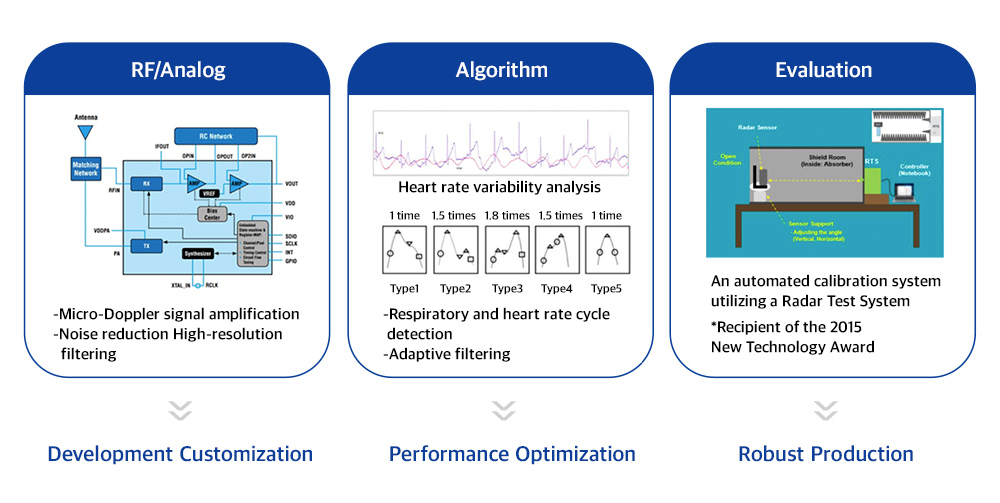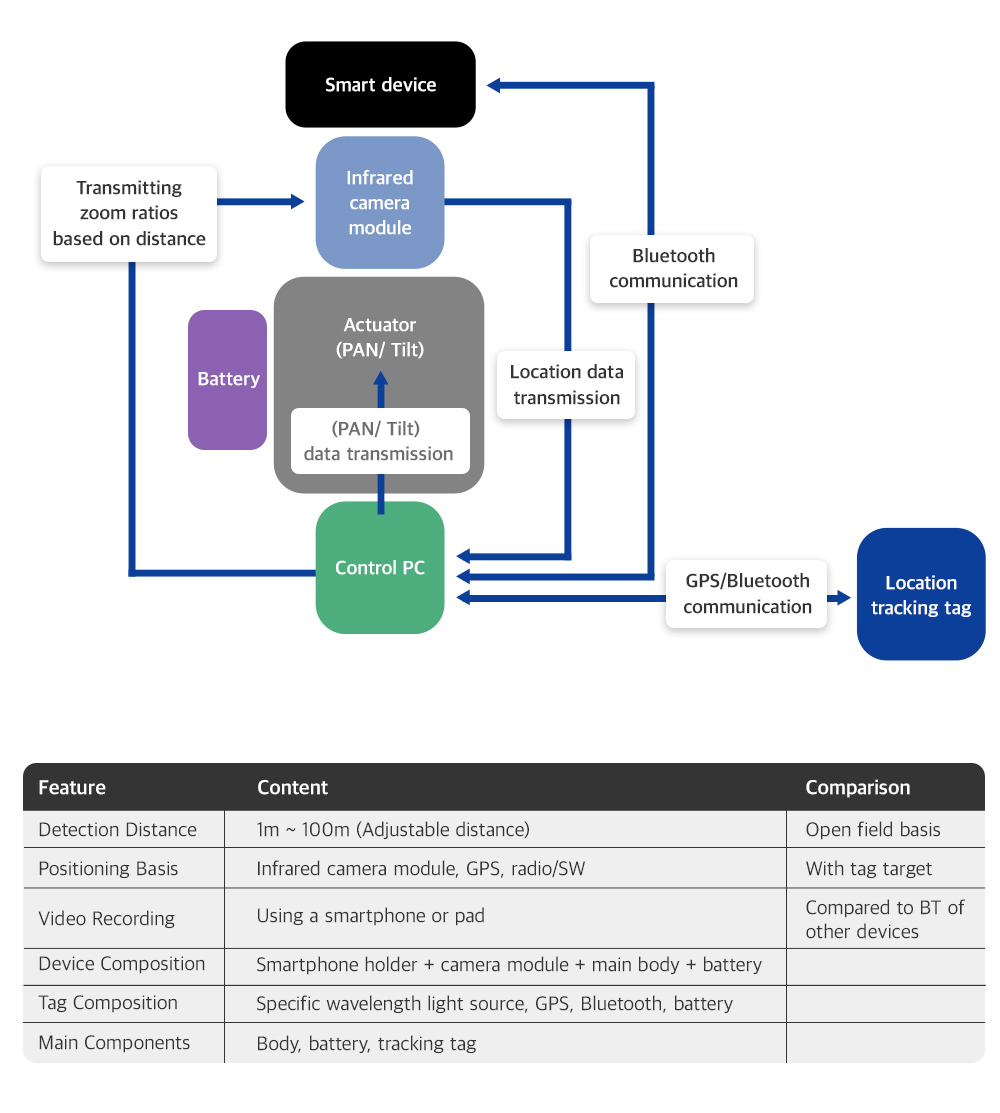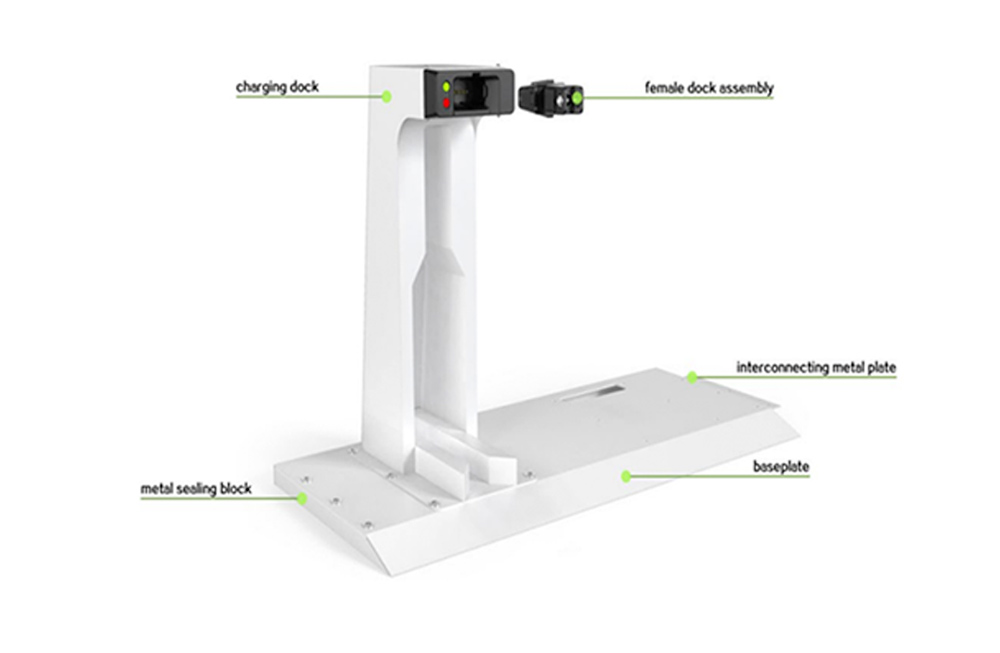Military
Supporting National Defense with Advanced Communication Technologies
Custom Embedded Solutions Tailored to Your Needs
Processor/SOM (Qualcomm/Rockchip AP module
Radar Sensor

Rapid, contactless monitoring of respiratory and cardiac signals enabled by graphene-based microsensors.
-Respiratory: Detects 0.2-0.5Hz frequency changes with up to 12mm displacement
-Cardiac: Detects 0.8-3Hz frequency changes with up to 0.5mm displacement

Micro-Doppler radar technology : Provides rapid, contactless monitoring of respiratory and heart rate
Long-range tracking system

Deep learning-based video recording device using an infrared camera
Video recording system that employs a deep learning-based location tracking algorithm utilizing infrared cameras to detect light sources,
specifically designed for outdoor sports like soccer and surfing in open-field environments. GPS data is also integrated for enhanced accuracy.
System configuration

Personal Mobility Charging System

Key Components
1. Charging Dock
-Composed of indicator lights, copper pins (for charging and communication), and a latch bolt.
-Internally, it consists of a control board, two signal detection boards, a 12V1A power adapter,
a waterproof seal ring, a buzzer, an electronic lock, and a sub-power line.
2. Baseplate
The standard baseplate, measuring 1360mm in length, can accommodate two charging docks.
3. Female dock assembly
-Mounted on the front of the scooter or e-bike's head tube.
-Consists of a charging port, magnets, a corrugated tube, a mounting bracket, and an adapter cable.
-The adapter cable is a 4-pin cable; 2 pins are used for IoT connections and 2 pins are used for charging.
System Diagram

1. Public Charging Station Sharing Service
2. Return and Lock Charging Service
3. Rental and Unlock Service
Remote Charging Station Management Service
The components of an IoT M2M system can vary depending on the specific purpose and scale of the system,
but generally include the following elements and services.
1. Data Acquisition and Transmission Layer
•Sensor node : collect various environmental data and convert it into digital signals.
•The communication module : transmits the collected data
•Gateway : concentrates data from multiple sensor nodes and transmits it to the cloud server.
2. Data Processing and Storage Layer
•Cloud server : store collected data and perform data analysis.
•Databases : systematically manage various types of data.
•Data processing engine : carries out data preprocessing, analysis, and modeling.
3. Service Layer
•Data visualization : presents collected data in a visual format.
•Notification service : alerts users based on predefined conditions.
•Remote control : Remote control allows users to control the system remotely.
•Predictive analytics : supports decision-making by forecasting future trends.
•Application services : cater to specific domains such as smart factories, smart agriculture, and smart homes.
4. Management and Security Layer
•System management : monitoring the system's status and performing administrative tasks.
•Security : provides security features like encryption, authentication, and access control to protect sensitive data.








